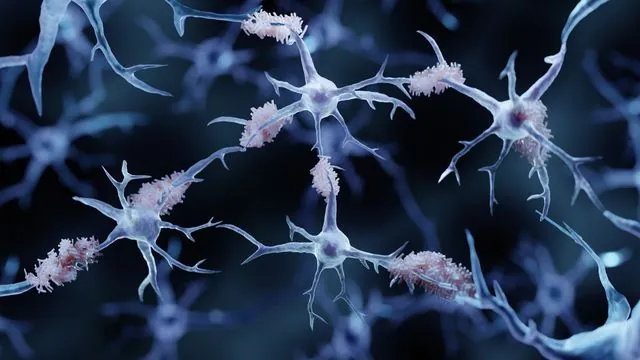
Stunning Link Between Parkinson’s and Melanoma: The Key Role of Alpha-Synuclein Uncovered!
2025-04-10
Author: Arjun
Revelation in Medical Research
Groundbreaking research from Oregon Health & Science University (OHSU) has unveiled a shocking connection between Parkinson's disease and melanoma, focusing on a protein known as alpha-synuclein (αSyn). Traditionally recognized for its role in neurodegeneration, this protein also appears to enhance DNA repair in cancer cells, significantly influencing the development of melanoma.
Link Between Two Diseases
This dual role of αSyn sheds light on a perplexing observation: individuals with Parkinson's are notably more susceptible to developing melanoma, and vice versa. Previous studies indicated a higher risk of melanoma in Parkinson's patients, yet the underlying mechanisms were unclear until now. The OHSU team hypothesized that elevated levels of αSyn in melanoma cells could be a crucial factor.
Cell-Specific Functions Uncovered
Led by OHSU MD/PhD candidate Moriah Arnold, the study explored αSyn’s functions in melanoma compared to its well-documented role in neurons. While past research revealed αSyn's involvement in repairing DNA double-strand breaks (DSBs) in neurons, the new findings suggest that in melanoma cells, this DNA repair function is not only preserved but significantly heightened, thus promoting tumor growth.
Crucial DNA Repair Mechanism
The researchers examined various melanoma cell lines and tumor samples, discovering that αSyn is abundantly found in the nucleolus—a crucial area in the cell's nucleus responsible for ribosome production and notoriously vulnerable to DNA damage. When DNA breaks were induced in the nucleolar ribosomal DNA, researchers noted a dramatic increase in αSyn at damage sites, where it actively helped recruit the vital DNA repair protein 53BP1.
Implications of αSyn Deletion
When αSyn was genetically removed from melanoma cells, these cells experienced heightened DNA damage, exhibited slower repair rates, and showed decreased proliferation, migration, and invasion capabilities. This suggests that αSyn plays a pivotal role in facilitating cellular response to DNA damage, consequently aiding tumor development.
Contrasting Roles in Different Cells
Interestingly, while αSyn aids in DNA repair in cancer cells, it misbehaves in neurons. Excess αSyn can mislocalize from the nucleus, forming toxic aggregates known as Lewy bodies, which ultimately contribute to neuronal death. "A neuron must endure a whole lifetime, and when αSyn overaccumulates, it disrupts normal functionality, leading to cell death," explained senior author Vivek Unni.
Therapeutic Possibilities
The insights gained from this research open new avenues for targeted therapies. Approaches might involve lowering αSyn levels in melanoma to hinder DNA repair and trigger cancer cell death. Conversely, enhancing DNA repair mechanisms in Parkinson’s patients by boosting 53BP1 recruitment could serve to counteract the effects of αSyn loss.
Next Steps in Research
Currently, no approved therapies specifically target αSyn for Parkinson’s or melanoma treatment; however, experimental drugs aimed at reducing αSyn aggregation in the brain are underway in clinical trials for Parkinson’s. The OHSU team is now focused on whether αSyn interacts directly with DNA repair proteins and exploring if strategies to stabilize αSyn in neurons can be developed.
Conclusion: A Dual Battle Ahead
The discovery of the roles of αSyn in both Parkinson’s disease and melanoma dramatically reshapes our understanding of these conditions, suggesting that strategies developed for one might inform treatment approaches for the other. The ongoing exploration of αSyn's role could be key to unlocking new therapeutic pathways.





 Brasil (PT)
Brasil (PT)
 Canada (EN)
Canada (EN)
 Chile (ES)
Chile (ES)
 Česko (CS)
Česko (CS)
 대한민국 (KO)
대한민국 (KO)
 España (ES)
España (ES)
 France (FR)
France (FR)
 Hong Kong (EN)
Hong Kong (EN)
 Italia (IT)
Italia (IT)
 日本 (JA)
日本 (JA)
 Magyarország (HU)
Magyarország (HU)
 Norge (NO)
Norge (NO)
 Polska (PL)
Polska (PL)
 Schweiz (DE)
Schweiz (DE)
 Singapore (EN)
Singapore (EN)
 Sverige (SV)
Sverige (SV)
 Suomi (FI)
Suomi (FI)
 Türkiye (TR)
Türkiye (TR)
 الإمارات العربية المتحدة (AR)
الإمارات العربية المتحدة (AR)